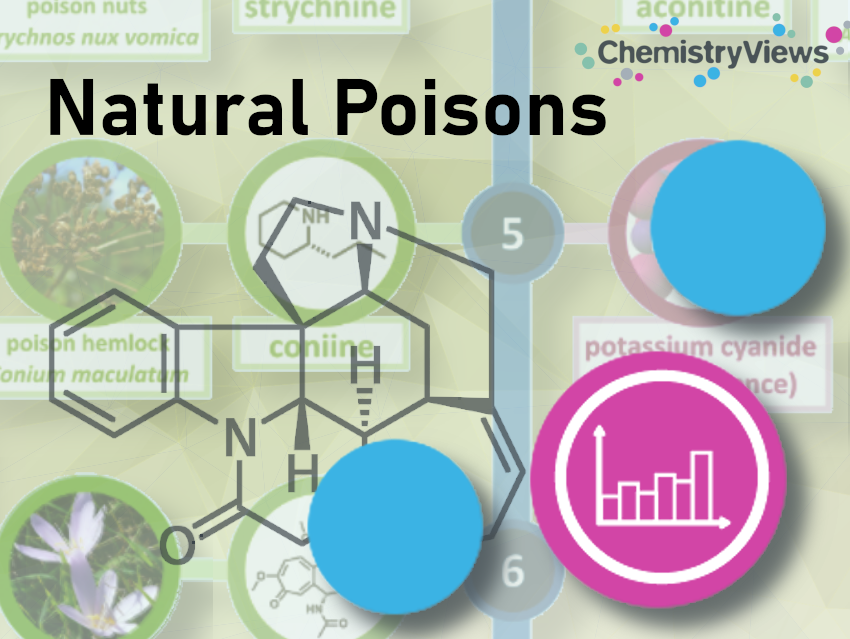Morphium was the first alkaloid to be isolated from any plant. The pharmacist’s apprentice Friedrich Sertürner isolated it from opium in 1804, and opened the door for the use of pure and precisely dosed medicinal substances.
Encouraged by this success, chemists discovered the active compounds in many other medicinal plants in the early 19th century. These compounds are great examples for the famous Paracelsus quote “The dose makes the poison”: While some of them have important medicinal uses, they can also be highly toxic.
.jpg)
Reference
- Table 1 of Strychnine: From Isolation to Total Synthesis – Part 1,
Klaus Roth,
ChemistryViews 2015.
DOI: 10.1002/chemv.201500031
Also of Interest
- See all articles by Klaus Roth published in ChemistryViews
- Agatha Christie: The Chemistry of a (Nearly) Perfect Murder,
Klaus Roth,
ChemViews Mag. 2015.
DOI: 10.1002/chemv.201500022
A devilish plan – thwarted by general chemistry knowledge - A Short Route to Strychnine,
Claire D’Andola,
ChemViews Mag. 2015.
Samarium diiodide-induced cascade cyclization - The Chemistry of Tobacco,
Sabine Streller, Klaus Roth,
ChemViews Mag. 2014.
DOI: 10.1002/chemv.201400096
How Does a Tobacco Plant Synthesize Nicotine? - From Pharmacy to the Pub – A Bark Conquers the World,
Sabine Streller, Klaus Roth,
ChemViews Mag. 2013.
DOI: 10.1002/chemv.201300056
The quinine-containing bark of the Cinchona tree is probably the most valuable drug the Americas gave the world - A Modern Synthesis of Strychnine,
Charlotte Brückner,
ChemViews Mag. 2012.
Robert Woodward was the first to make it in 1954 – and you? - Espresso – A Three-Step Preparation,
Klaus Roth,
ChemViews Mag. 2010.
DOI: 10.1002/chemv.201000003
Klaus Roth proves that no culinary masterpiece can be achieved without a basic knowledge of chemistry




